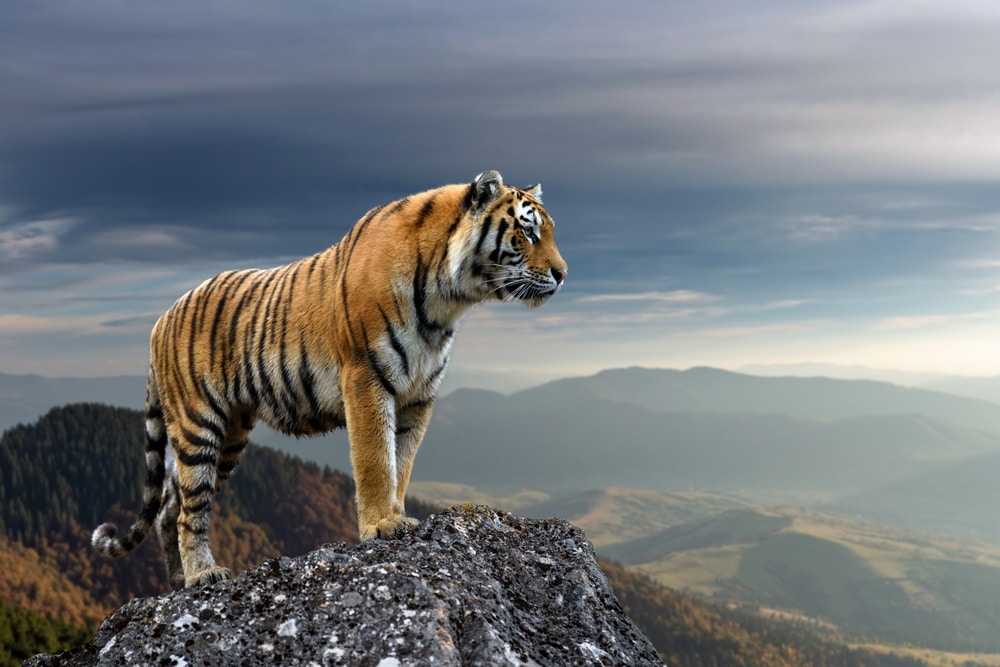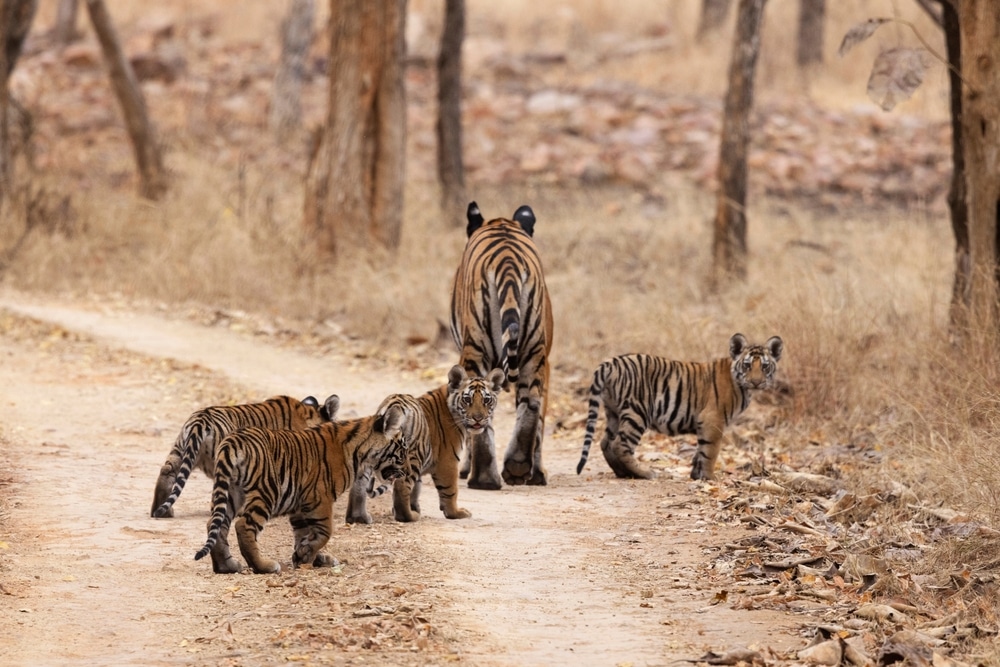
Tigers are one of the world's most iconic and majestic wild species. Their striking appearance and powerful presence have captivated humans for centuries. However, today, these magnificent creatures face numerous threats that place their very existence at risk.
About a century ago, there were over 100,000 wild tigers across Asia. But this number is drastically different today. According to the World Wildlife Fund, nearly 97% of the world's tigers have been lost.
This alarming decline has led to the classification of tigers as endangered by the International Union for Conservation of Nature (IUCN). The situation is critical, and urgent action is needed to ensure the survival of these magnificent animals.
There are numerous tiger threats that put their populations at risk of decline and even extinction. These threats are primarily driven by human activities and environmental changes and include:
Illegal poaching is one of the most immediate and significant threats to tiger populations worldwide. It involves the unlawful hunting and killing of tigers for their body parts, mainly their:
Tiger skins and other parts are considered prestigious and luxury items in many cultures and, therefore, command a huge price, both legally in countries like China and illegally on the black market across the globe.
Habitat loss is another major threat to tiger survival. Tigers require large territories to roam and hunt, but their habitats are being rapidly destroyed and fragmented due to human activities and natural processes like:
Loss of habitat can have global implications for tigers and the entire ecosystem. The fragmentation of habitats can isolate populations, leading to inbreeding and difficulties in finding suitable mates. Habitat loss can also cause a decline in prey species, making it harder for tigers to find food.
Human-wildlife conflict arises when tigers and humans come into direct competition for resources, mainly prey and space. As tiger habitats shrink and human populations expand, such conflicts become more frequent and can result in harm or economic loss to both parties. Human-wildlife conflict happens primarily because of the following:
Human-wildlife conflict can result in injuries or deaths to both tigers and humans, eroding local support for tiger conservation missions. Retaliatory killings and habitat degradation further endanger tiger populations.

Losing tigers would have profound and far-reaching implications for ecosystems, biodiversity, and human societies. Tigers play a crucial role in maintaining the health and balance of their ecosystems, and their extinction would have cascading effects on both natural and human systems. Here are some of the key implications of losing tigers:
Tigers are apex predators, meaning they are at the top of the food chain. Their presence regulates prey populations and helps maintain the diversity of species within their ecosystems. If tigers were to disappear, it could lead to unchecked population growth of prey species and the decline or extinction of other species lower in the food chain.
Tigers are considered umbrella species because their conservation efforts benefit a wide range of other species in their habitats. Losing tigers could lead to a cascading effect, negatively impacting the entire ecosystem and potentially leading to the decline or extinction of other species.
Tigers are a significant draw for wildlife tourism, generating revenue and employment opportunities in many regions. The loss of tigers would reduce the attractiveness of these areas to tourists and harm local economies.
Tigers hold immense cultural significance in many countries, particularly in Asia. They are revered in various mythologies, art, and traditional practices. Losing tigers would represent a loss of cultural heritage and spiritual connections for many communities.
Tigers provide valuable insights into predator-prey dynamics, genetics, and conservation biology. Losing tigers would limit our ability to study and learn from these magnificent animals.

Lions Tigers & Bears (LTB) rescues and provides lifetime care to big cats and exotic animals that have been mistreated, abandoned, or retired from various situations, such as private ownership, circuses, or roadside attractions. We ensure that rescued animals receive proper veterinary care, nutrition, and comfortable living environments designed to meet their specific needs. Because Lions Tigers and Bears is a no kill, no breed, accredited exotic animal sanctuary, we sustain existing life.
We’re also committed to educating the public about the challenges facing exotic animals and the importance of conservation and ethical treatment. Our educational efforts include guided tours, workshops, and outreach events to raise awareness about the issues related to big cats, bears, and other exotic animals in captivity.
We also engage in advocacy efforts to help people promote policies and regulations that protect exotic animals from abuse and exploitation.
Conservation is a collective effort, and every action, no matter how small, contributes to the preservation of these majestic creatures and the ecosystems they inhabit. Here are some things you can do to help protect tigers and ensure a future where they continue to roam the wild.
Making a difference doesn’t have to be complicated or require significant resources. Even small actions can collectively contribute to the preservation of tigers and their ecosystems.

Ph: 619.659.8078
Fx: 619.659.8841
[email protected]
24402 Martin Way, Alpine, CA 91901